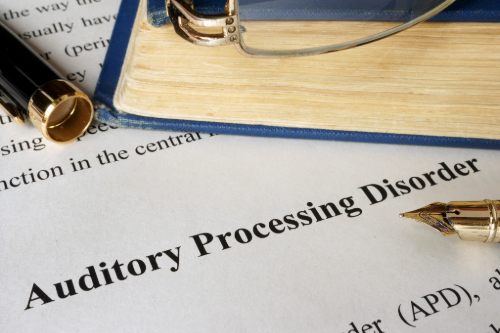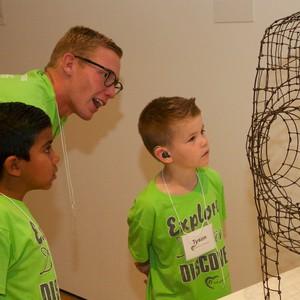When a child struggles to follow directions, confuses words that have similar sounds, or seems distracted in noisy places, parents might wonder if hearing loss may be the problem. But in some cases, the issue may not be with the ears at all: It could be a condition called auditory processing disorder (APD).
Hearing loss and APD share many of the same symptoms, but they’re actually very different conditions that require distinct evaluations and support. Below, we’ll break down the key differences to help you support your child’s unique needs.
What Is Hearing Loss?
Hearing loss refers to a reduced ability to detect sound, often caused by problems in the outer, middle, or inner ear. There are three main types:
- Conductive hearing loss: Caused by blockages or damage in the outer or middle ear (like ear infections or wax buildup)
- Sensorineural hearing loss: Involves damage to the inner ear or the auditory nerve, often due to aging, noise exposure, or genetics
- Mixed hearing loss: A combination of conductive and sensorineural types
Physicians typically make a diagnosis through standard hearing tests like audiograms, otoacoustic emissions or auditory brainstem response (ABR) testing. If a child has hearing loss, the issue lies in their ability to detect sound.
What Is Auditory Processing Disorder?
APD, on the other hand, is not a hearing issue; it’s a brain-based problem with interpreting sounds. Kids with APD can hear just fine, but they have trouble making sense of what they hear. It’s often described as “hearing but not understanding.”
Some common challenges include:
- Trouble following multi-step verbal directions
- Difficulty distinguishing similar sounds or words
- Struggling in noisy environments (like classrooms or restaurants)
- Misinterpreting jokes, sarcasm, or figurative language
Because the ears work normally, a standard hearing test may come back showing no issues. But that doesn’t mean everything is functioning as it should. In APD, the breakdown happens after sound is detected, during processing in the central auditory nervous system.
How Testing and Diagnosis Differ
To diagnose hearing loss, audiologists use traditional hearing tests that measure sound detection. Diagnosing APD, however, requires specialized testing that goes beyond detecting sound.
Evaluations often involve a multidisciplinary team, including:
- An audiologist to assess auditory processing abilities
- A speech-language pathologist to evaluate language comprehension and communication
- A psychologist to rule out attention or learning differences that may look similar to APD
Treatment and Support Options
If your child is diagnosed with hearing loss, treatment may include:
- Hearing aids
- Cochlear implants
- Assistive listening devices
- Medical or surgical interventions
Or, if your child is diagnosed with APD, support typically involves:
- Auditory processing therapy
- Speech-language therapy
- Classroom accommodations (e.g., seating changes, written instructions)
- Environmental modifications to reduce background noise
- Assistive listening devices
APD vs. Hearing Loss: Final Thoughts
Understanding the difference between hearing loss and auditory processing disorder is crucial for getting your child the right support. If your child seems to struggle with listening but their hearing test is normal, don’t stop there. A deeper look at how they process sound could reveal what’s really going on.
With the right diagnosis and tailored treatment plan, kids with either condition can thrive—in the classroom, at home, and beyond. To learn more or talk with our hearing professionals, contact Hearts For Hearing in Tulsa and Oklahoma City today.




